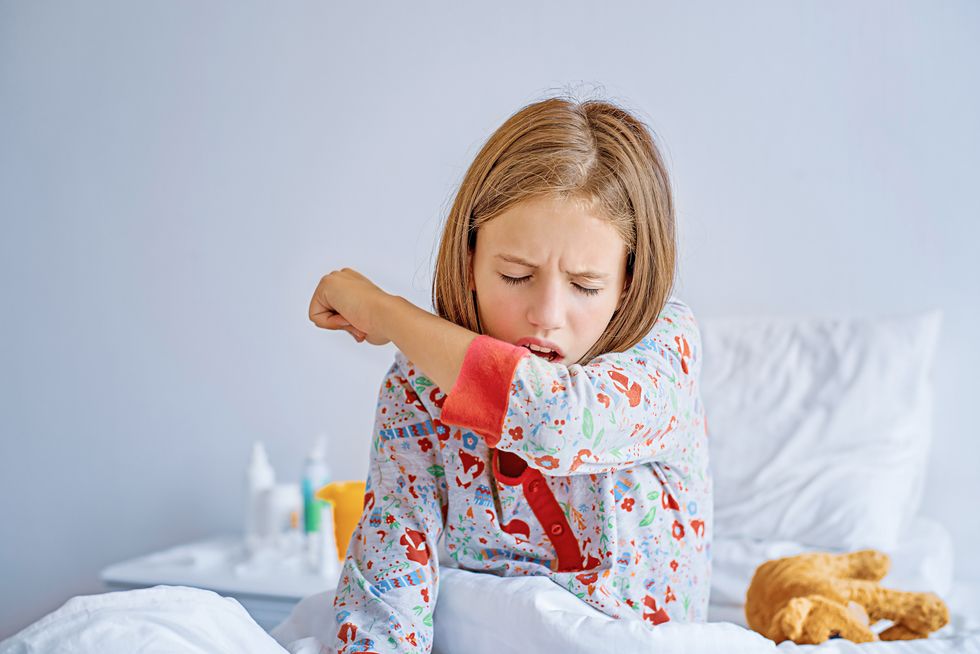Cases of highly contagious and deadly disease surging across US – What are the symptoms?
Whooping cough cases have surged dramatically, with more than 30,250 cases reported in the US in 2024 – over six times higher than the same period last year.
The latest data from the Centers for Disease Control and Prevention (CDC) shows 553 cases were reported in the week ending December 7, compared to just 105 cases during the same week in 2023.
This marks a significant return to pre-pandemic patterns for the highly contagious respiratory infection, also known as pertussis.
The rise follows a several-year lull during the pandemic when various infectious diseases saw reduced transmission due to COVID-19 prevention measures.
Despite the current surge, cases remain notably lower than in previous decades, before the widespread introduction of vaccines in the 1940s, when hundreds of thousands of cases were reported annually.
The East North Central region of the US has been particularly affected, recording 7,675 cases so far this year across Illinois, Indiana, Michigan, Ohio, and Wisconsin.

Ohio currently leads individual state tallies with 81 cases in the most recent reporting period.
The Middle Atlantic region, comprising New York, New Jersey, and Pennsylvania, has reported the second-highest number of cases at nearly 5,700.
Dozens of states across the contiguous US and Alaska have reported cases this week, with the East North Central region accounting for more than a fifth of new infections.
The surge is not limited to the United States, with the United Kingdom also reporting increasing cases.
Ten infant deaths have been recorded in the UK this year due to the disease.
LATEST HEALTH NEWS:
- Heart attack risk SLASHED by drinking wine claims new study
- Sleep expert names ‘effective’ fruit juice for better sleep
- How to fall asleep more quickly with evening routine that ‘calms the mind and promotes relaxation’

Whooping cough can initially resemble a common cold, but typically develops into more severe symptoms within one to two weeks of infection.
In adults and children over one year, the illness causes violent, uncontrolled coughing fits that may be accompanied by a distinctive “whooping” sound when gasping for air.
These coughing bouts can last several minutes, often worsen at night, and may cause vomiting or the production of thick mucus.
Infants under 12 months, who face the greatest risk, often don’t develop the characteristic “whoop” sound.
Instead, babies may experience dangerous breathing interruptions called apnea, which can be life-threatening.

In caucasian babies, this can cause blue discolouration of the skin, lips, and tongue, whilst babies with darker skin may develop grey colouring, particularly visible on the palms, soles, and inside eyelids.
Infants may also develop pneumonia, seizures, and dehydration, requiring immediate medical attention.
The CDC recommends vaccination for everyone against whooping cough, with both main vaccine types – Tdap and DTaP – proven safe and effective.
Babies receive several shots at two, four and six months, combined with protection against other diseases including tetanus, diphtheria and polio.
Booster shots are given between 15-18 months and again at ages 4-6 years.
Preteens should receive another booster between ages 11-12, with catch-up doses available for teenagers who missed this vaccination.
Adults are recommended to get a top-up dose every 10 years.
Pregnant women are offered the vaccine in their third trimester, which provides crucial protection to their unborn babies.
“This passes protection to their baby in the womb so that they are protected from birth in the first months of their life when they are most vulnerable,” explains UK public health leader Gayatri Amirthalingam.
Public recognition of symptoms is limited, with only coughing fits being widely identified by respondents of a recent survey by the Annenberg Public Policy Center (83%).
“Instead of speaking about the DTaP and Tdap vaccines and using the unfamiliar term ‘pertussis,’ public health communicators should reiterate that our best defense against whooping cough is the whooping cough vaccine,” says Kathleen Hall Jamieson, director of the Annenberg Public Policy Center.

